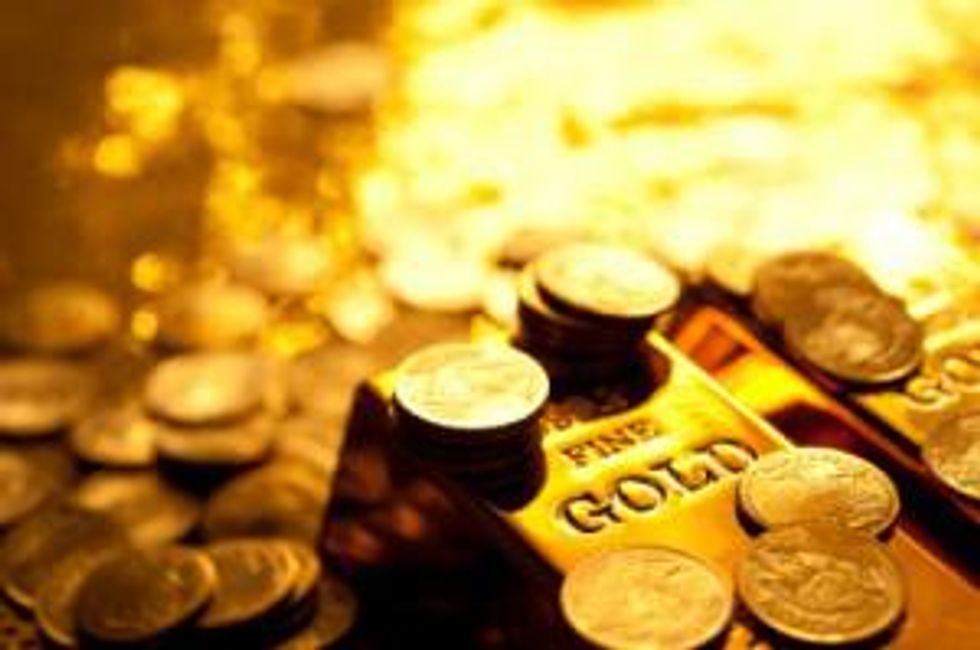A Look Back: World Gold Council Examines Q1 Gold Trends
The World Gold Council said in its Q1 report that global gold demand wasn’t much different than it was in the year-ago quarter.
In its recent Gold Demand Trends Q1 2014 report, the World Gold Council (WGC) notes that gold demand has remained largely unchanged year-over-year this past quarter; beyond that, the yellow metal looks to be returning to its fundamentals.
Jewelry
One of the top demand drivers for gold is jewelry, with a good portion of demand for gold jewelry coming from China and India. In the first quarter of this year, demand for gold jewelry was up by a slight 3 percent, or 570.7 tonnes, compared to 554.7 tonnes in Q1 2013.
The WGC attributes the continued momentum in the jewelry market to “traditional patterns,” with “seasonal effects” stemming from China in particular due to Chinese New Year. The report highlights that consumer demand and stockpiling from Q4 2013 continued strongly in the first month of the year before calming once the holiday season had passed.
Despite lax demand by the end of the quarter, the WGC notes that on the whole consumers were “relatively robust in their demand for gold jewellery in the last quarter”. However, looking ahead, the market is already hinting at “significantly weaker” comparisons. As a result, the WGC expects Q2 jewelry demand to be more “into line with longer term average levels.”
Investment not so bright
In Q1, investing in gold lost some of its luster, dropping 2-percent year-on-year to hit 282.3 tonnes compared with last year’s 288.1 tonnes.
“[T]he picture of stability at the aggregate level conceals a more marked divergence in the different elements of demand withing the sector: bar and coin demand was significantly weaker while ETF outflows dwindled,” the WGC explains.
The firm notes that net demand for gold exchange-traded funds (ETFs) was zero, with limited activity on both sides during the quarter; in turn, that was positive for year-on-year comparisons. In February, tension in Ukraine renewed investor appetite for risk hedging, which resulted in positive monthly inflows to ETFs for February and March. However, that activity was offset by continued speculation about an economic recovery in the US and worldwide, along with rumors of possible US rate increases in the year to come. As a result, inflows into gold ETFs were mostly neutralized.
Bar and coin demand hit its lowest level in four years, down 30 percent year-on-year. As with jewelry demand, bar and coin demand in China held up well before Chinese New Year, then dropped away “fairly sharply”. In India, however, bar and coin investment was limited, clocking in well below the “year-early levels and the five-year quarterly average,” with governments putting a damper on demand.
In the US, demand for gold investment products, according to the WGC, was mostly subdued in Q1, falling 30 percent below the previous year’s levels.
“Although sales of Eagle coins by the US mint indicate a dramatic drop in demand compared with the year-earlier period, this does not take into account imported bullion such as Canadian Maple Leafs, of the extent of demand in the secondary market, which was reasonably buoyant,” the WGC notes.
Central banks
Central banks continued to buy gold in Q1 2014, but purchases remained within the same buying range as the last three years. The WGC identifies nothing out of the ordinary in terms of Q1 gold purchases from central banks; that said, it does mention that the only “surprise” was a 36-tonne increase of reserves by Iraq’s central bank.
The announcement of a substantial increase in Iraqi reserves, along with continued Q1 buying from countries such as Russia and Kazakhstan, demonstrates central banks’ continued desire to accumulate gold for diversification purposes.
Supply
Gold supply in Q1 was up slightly compared to the previous year, with an additional 55.7 tonnes from mine supply offset by a decline of 46.6 tonnes in recycled gold. Mine production was up 6 percent year-on-year, and the WGC attributes that rise to new operations coming online or ramping up.
During the first quarter, mining companies continued the trend of trying to reign in their costs and increase their operational efficiencies, both of which should translate to continued growth moving forward. The report highlights that Canada contributed the most to the additional supply in Q1, with increasing growth at the new Detour Lake, Canadian Malartic and Young-Davidson mines. As for ramp ups, the bulk of that stems from the Dominican Republic’s Pueblo Viejo mine, which came online in late 2012.
Recycled gold was down 13 percent in Q1 due in part to improving economic conditions. With mine production up by 6 percent, that led supply to a marginal increase of 1,048 tonnes in Q1.
What next?
With gold prices currently lingering just below $1,300 an ounce it is hard to say for sure what the yellow metal will do next. Optimistic investors may hope that we will see an improvement in prices and increased investment demand. At the very least, more of the same trends could be acceptable.
Securities Disclosure: I, Vivien Diniz, hold no direct investment interest in any company mentioned in this article.





